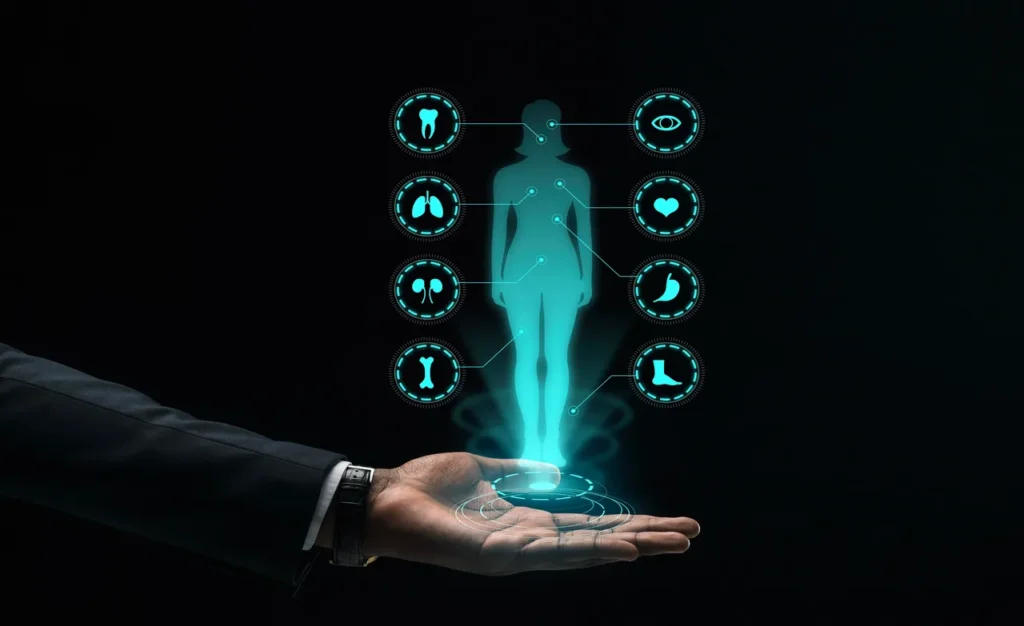You are sick, and you decide to see a doctor. When you phone to book an appointment, you are asked about insurance, primary care provider, deductibles, and copays. The US healthcare system is complex and stressful. All works, but how?
The basics of the American Health Care Delivery Systems are explained here. The post will explain how physicians, hospitals, and insurance companies fit together. Discover the differences between primary care physicians, specialists, and others.
You will know how to receive the necessary treatment without bureaucracy by the end. Breathe profoundly and delve in—your health matters. Understanding the system will help you maximize its use, even when imperfect.
Evolution of Health Care Delivery Systems

The health care system adapts to patient requirements and medical technology. Healthcare delivery may change in the future:
More people will utilize telemedicine (telehealth). Telemedicine connects physicians and patients via video conferencing and other technology. Patients may consult doctors, acquire diagnoses, and receive treatment recommendations at home. Telemedicine can improve rural patient access. It also makes minor medical difficulties easier.
AI and machine learning will be used in healthcare. AI and machine learning can evaluate patient data, identify health concerns, diagnose illnesses, and suggest treatments. Technologies can notice trends people overlook and give insights that enhance outcomes. However, human doctors will still be needed for empathy, emotional support, and a human touch.
Wellness and prevention will be prioritized. The healthcare system will emphasize prevention, healthy lifestyles, and holistic well-being. Health tests, exercise, and dietary education can prevent or detect health disorders. To promote wellness, a holistic approach incorporates physical and mental health.
New coordinated care models will develop. The fee-for-service system often needs to be more cohesive and coordinate treatment. New approaches like accountable care organizations organize population-based care. All care providers work collaboratively to keep patients healthy and save expenses. These innovative models use patient-centered, team-based approaches to enhance results.
Technology and Touch Will shape Health Care Delivery Systems. Improved medication, technology, and care models will make the system more efficient, individualized, and effective. With their understanding and compassion, human physicians will remain vital to health care.
Health Care Delivery Challenges and Solutions Globally

The Health Care Delivery Systems organizes and finances population medical treatment. Healthcare delivery models vary worldwide, as does government engagement. Significant worldwide challenges include:
Access to Care
Lack of insurance, excessive fees, and a shortage of doctors prevent many from receiving primary health care. Countries strive for universal health care, but numerous impediments must be addressed. Government-funded insurance, community health facilities, and doctor incentives in underprivileged regions are possible answers.
Cost Control
Rising healthcare expenses worry consumers and governments.
· Prioritize preventative care: Educating, screening, and rewarding healthy behaviors to prevent disease. This cuts long-term expenses.
· Generic medication use: When feasible, prescribe generic drugs to save patients and health systems money.
· Electronic health records, telemedicine, and AI may enhance efficiency, minimize mistakes, and cut costs when correctly deployed.
Some systems base medication and therapy coverage on cost-effectiveness. This contentious approach maximizes resource efficiency but limits life-saving care.
Quality Care
Ensuring patient safety, quality treatment, and good results is difficult yet essential. One solution is ensuring health workers satisfy minimal education, training, and safety requirements through credentialing and licensure.
Standardizing care: Creating evidence-based diagnostic and treatment recommendations. Measure quality parameters, including infection rates, readmission rates, mortality, and patient satisfaction, to evaluate hospital, clinician, and system performance, reducing variability and improving outcomes. Use results to improve.
Investment in health care workers: Competitive pay and continued education help maintain top talent. Improving access, controlling prices, and assuring quality are difficult. A thriving healthcare delivery system balances government policy, market forces, technology, and human resources to improve population health.
How Technology Improves Health Care
Health Care Delivery Systems are enhanced by technology. EHRs, telemedicine, and medical gadgets are changing treatment.
Electronic Health Records
Health care has changed because EHRs give a complete medical history for each patient. Doctors may view your prescriptions, test results, imaging scans, and more with a click. EHRs increase care coordination since all providers have duplicate records. They warn clinicians of medication interactions and allergic responses, reducing medical mistakes.
Telehealth lets you see a doctor by phone or video chat. This can speed up and simplify care. Telehealth works well for colds, rashes, and stomach problems. Homebound patients can also contact providers. Some insurance policies cover telemedicine appointments as well as in-person ones.
Medical gadget advances to improve diagnosis and therapy. Advanced imaging scans can discover health concerns early and track illness development noninvasively. Robotic surgical systems let surgeons perform complex procedures with precision, flexibility, and control. Insulin pumps, heart monitors, and cochlear implants improve life.
Healthcare technology has much to improve. System interoperability must increase to communicate information safely. Rural and underdeveloped communities need faster internet and modern technology. To make these technologies accessible to more people, technical skills, privacy issues, and costs must be addressed.
Technology is crucial to improving health care. Technology will help us live longer, healthier lives when broadly and wisely embraced. The future is bright.
Health Literacy Matters for Effective Health Care Delivery Systems
Understand how the Health Care Delivery Systems work to maximize its benefits. Developing health literacy is crucial. Health literacy is gathering, analyzing, and comprehending fundamental health information for decision-making.
With high health literacy, you can
• Identify and assess reliable health information sources. This involves medical terminology and assessing health information for reliability and evidence.
• Analyze health statistics, risks, and advantages. Understanding treatment choices, drugs, and medical procedures can help you choose what fits your beliefs.
• Complete complicated health forms and adhere to drug recommendations. You feel comfortable asking questions to clarify directives and expectations.
• Communicate well with physicians and healthcare providers. You can explain your symptoms, ask questions, and create a treatment plan with your care team.
• Make informed health and well-being choices. You know how to make healthy choices, properly use healthcare resources, and manage your health.
Conclusion
You know how this incredibly complicated Health Care Delivery Systems work day-to-day. Public or private, for-profit or not-for-profit, it’s a complex system that serves hundreds of millions of people and improves health. Fortunately, you now know who does what and how. You know where your insurance premiums go and why healthcare is so expensive.
Most importantly, you know how to navigate the system and advocate for yourself or loved ones to seek the finest treatment. Though the system is faulty, your health and well-being matter most. Stay educated and healthy!
Our Services include the best healthy eating habits, nutrition guides, diet, nutrition plans and newsdailytime.
FAQs
What is a Health Care Delivery Systems?
Healthcare delivery systems are the networks of organizations, resources, and experts that provide medical treatment. Hospitals, clinics, physicians, nurses, pharmacists, insurers, and others are included.
What are the different types of healthcare delivery systems?
Different healthcare delivery systems exist:
Patients pay individually for each treatment or operation.
Managed Care: Health insurance plans that coordinate and regulate healthcare expenditures.
Accountable Care Organization (ACO): A collection of healthcare professionals coordinating patient care to improve quality and save costs.
Patient-Centered Medical Home (PCMH): A primary care practitioner coordinates care.
How does healthcare delivery work?
Individuals receive medical care as needed within the healthcare delivery system. Medical professionals diagnose and treat patients. Insurance companies control healthcare expenses and compensate providers.
What are healthcare delivery issues?
Common issues in healthcare delivery include rising expenses.
· Healthcare, especially for marginalized populations
· Disorganized care and poor provider coordination
· Medical mistakes and patient safety issues
· Scarce resources and workers
· Health disparities between populations
How does technology affect Health Care Delivery Systems?
Technology is vital to healthcare delivery. EHRs simplify patient data and increase provider communication. Telemedicine allows remote consultations and care. Medical equipment aids in diagnosis and treatment. Technology aids population health management and quality improvement data analysis.
Read More: Role of Pharmacist in Public Health

